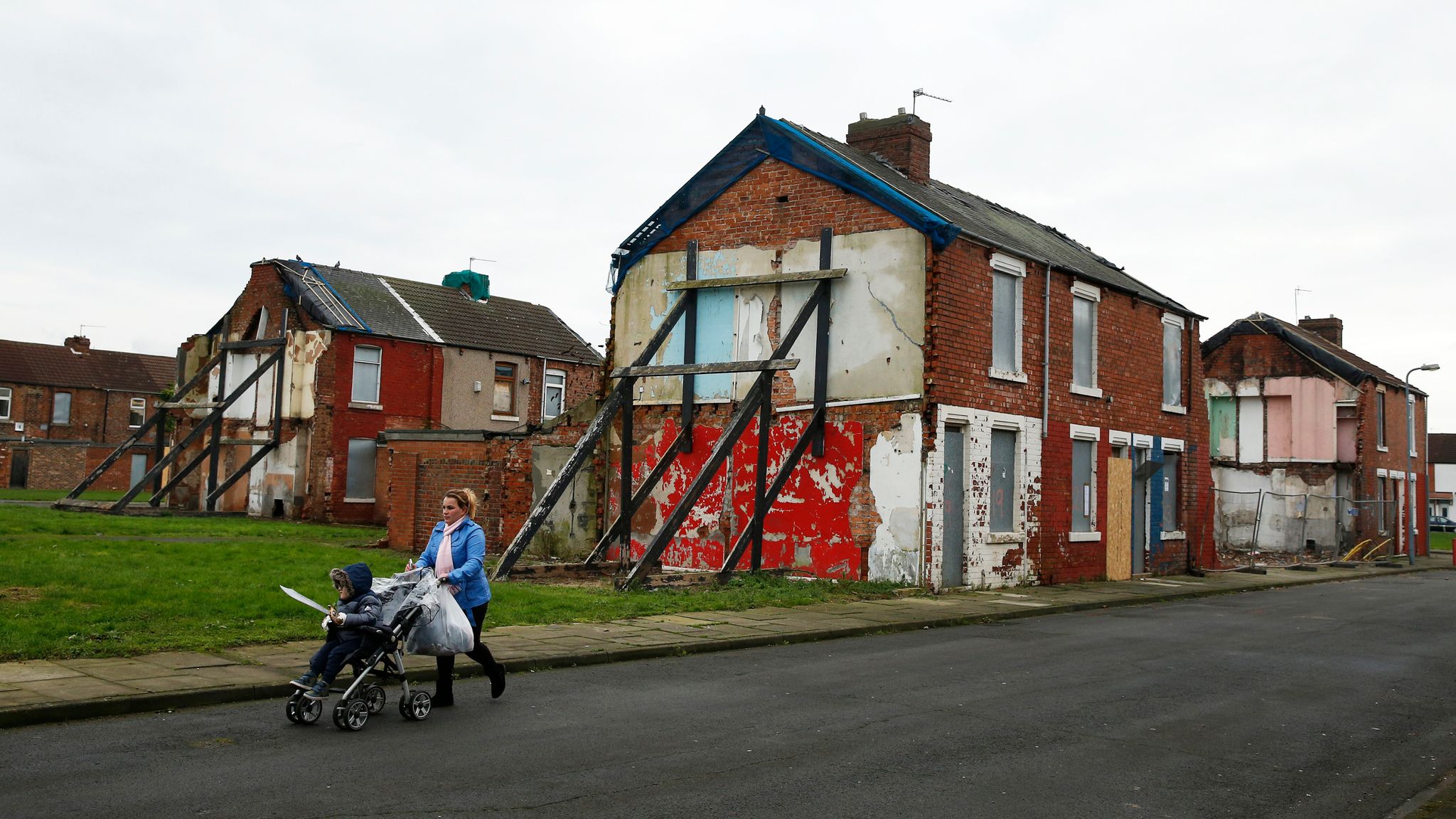The analysis of economic inequalities often overlooks a key aspect: how hyper-localized many of these disparities truly are. Take the example of Greater Manchester: the city of Manchester itself boasts a GDP per capita of £59,000, while Tameside, one of its neighboring areas, is drastically lower at £19,000. Similarly, Leeds, with a GDP per capita of £42,000, stands in stark contrast to Bradford, just 10 miles away, where the GDP per capita is £23,600. These discrepancies in local economic output are not easily explained by factors like infrastructure development or commercial investment alone.
Even within larger cities like London, one can observe similar economic gaps. For instance, comparing neighborhoods such as Lewisham and Southwark, or Camden and Haringey, reveals significant variations in living standards and economic conditions. This suggests that the inequality is not necessarily about geographic size but rather the socio-economic factors that play out on a much more localized scale.
The challenge, therefore, is not merely to look at these disparities from a macro perspective but to analyze the gaps at a much more granular level. The differences between neighboring areas, schools, and families are critical. These are the human capital factors—the intangible elements like access to quality education, job opportunities, and support networks—that often keep people trapped in cycles of poverty. Take the example of Knowsley, a town with a historically low level of prosperity. While building a university or an innovation hub there might sound like a plausible solution, it may not do much for the large number of children who leave school without basic literacy skills. The problem goes beyond economic infrastructure; it is about addressing the root causes of poverty, often deeply embedded in social structures and educational shortcomings.
When examining economic disparities at the hyper-local level, it is essential to acknowledge the limitations of using GDP per capita as a metric. GDP per capita often includes commuters who work in a city but live elsewhere. This creates an imbalance, as the economic output generated by commuters is attributed to the city, while the residents who are part of that local economy are underrepresented in the capita calculation. For example, in Greater Manchester, many workers commute into the city, inflating its GDP per capita without necessarily reflecting the economic reality of the people who live in areas like Tameside or Oldham.
This discrepancy is also evident in cities like Leeds and Bradford. Workers who live in rural areas such as Ilkley or Harrogate may commute into Leeds, contributing to the city's economic activity but skewing the per capita income statistics. As a result, these numbers can be misleading when comparing the economic conditions of different areas. The key takeaway is that GDP per capita, when used in isolation, fails to capture the full picture of economic inequality, especially in areas with significant commuter populations.
Beyond GDP, there are other factors contributing to economic disparities, particularly in relation to the distribution of wealth and opportunities. The North of England, including areas like Manchester, Leeds, and Sheffield, has seen pockets of prosperity but is still largely overshadowed by a backdrop of poverty. While there are indeed affluent areas in these cities, they are often surrounded by less affluent neighborhoods, creating stark contrasts within the same metropolitan area. This situation is compounded by the limited prosperity in some areas, making it harder for local residents to access the same opportunities available in wealthier neighborhoods.
In London, the situation is somewhat reversed. While there are certainly areas of poverty, they are typically surrounded by vast wealth. Central and affluent neighborhoods benefit from high property values and a strong economy, which creates a different dynamic. This disparity highlights the role of location, both in terms of physical proximity to wealth and in access to high-value industries like finance and media. However, the challenge remains in ensuring that the wealth generated in these areas is more evenly distributed, particularly in terms of educational access and job opportunities.
Understanding economic disparities requires a deeper examination of the local factors at play. These factors include access to high-quality education, stable family structures, and social support systems. For example, a child growing up in an environment where education is not prioritized may struggle to succeed academically, regardless of the quality of the schools in the area. Similarly, areas with high levels of social deprivation often suffer from lower levels of social mobility, which makes it harder for individuals to break out of poverty.
Education plays a central role in determining economic outcomes. A well-educated population is more likely to secure higher-paying jobs and contribute to a growing economy. However, if education is not prioritized in the home or community, children may struggle to perform well in school. The lack of academic success can create a cycle of poverty, where the next generation faces similar challenges. This is particularly evident in areas with generational poverty, where the parents and grandparents of children may not have had access to the same opportunities, perpetuating the cycle of disadvantage.
The importance of early intervention cannot be overstated. Providing children with the tools and support they need to succeed in school is crucial in breaking the cycle of poverty. This includes not only improving the quality of education but also addressing broader social factors such as family support and community resources. In many cases, schools in deprived areas struggle to provide the level of support necessary for children to succeed academically. This is where targeted interventions, such as additional tutoring or mentorship programs, can make a significant difference.
Furthermore, the role of local government and policymakers cannot be ignored. Local governments have a key role to play in addressing economic disparities by ensuring that resources are allocated equitably across different areas. This includes funding for schools, healthcare, housing, and infrastructure. In many cases, areas with higher levels of deprivation receive less funding per capita than wealthier areas, exacerbating the inequality. Ensuring that resources are distributed more equitably is a key step in addressing the systemic issues that perpetuate economic disparities.
Another key factor contributing to economic inequality is the availability of good jobs. Areas with high levels of poverty often have fewer job opportunities, which makes it harder for residents to escape poverty. In contrast, wealthier areas benefit from a concentration of high-paying jobs, particularly in sectors like finance, technology, and creative industries. As a result, residents of poorer areas may be forced to accept low-paying, insecure jobs, which further perpetuates the cycle of poverty.
In recent years, there has been a growing focus on the importance of innovation hubs and university-led regeneration projects in addressing economic disparities. While these initiatives can help create jobs and stimulate local economies, they are not a panacea for the deeper issues at play. Building a university or innovation hub in an area like Knowsley may not immediately improve the prospects of local children who are struggling with basic literacy and numeracy. Instead, these initiatives must be paired with more targeted interventions that address the root causes of poverty, such as improving education and providing greater access to quality healthcare.
Moreover, the issue of economic inequality is not limited to the UK. Around the world, there are cities and regions where stark contrasts exist between wealthy neighborhoods and impoverished areas. This pattern can be seen in cities like New York, Paris, and Chicago, where pockets of extreme poverty exist alongside some of the wealthiest areas globally. In these cities, access to good education and job opportunities is often restricted by geography, with poor neighborhoods struggling to access the same resources as wealthier ones. The challenge, therefore, is to ensure that opportunities are made available to all residents, regardless of where they live.
In conclusion, addressing economic inequality requires a multifaceted approach that goes beyond simply building innovation hubs or attracting investment. While these measures can play a role in improving economic conditions, they are not sufficient on their own. A more granular approach, focusing on the human capital factors that contribute to poverty, is essential. This includes improving access to quality education, addressing social deprivation, and ensuring that local resources are allocated equitably. Only by tackling these deeper issues can we begin to address the persistent inequality that exists in many cities and regions around the world.






























0 Comments